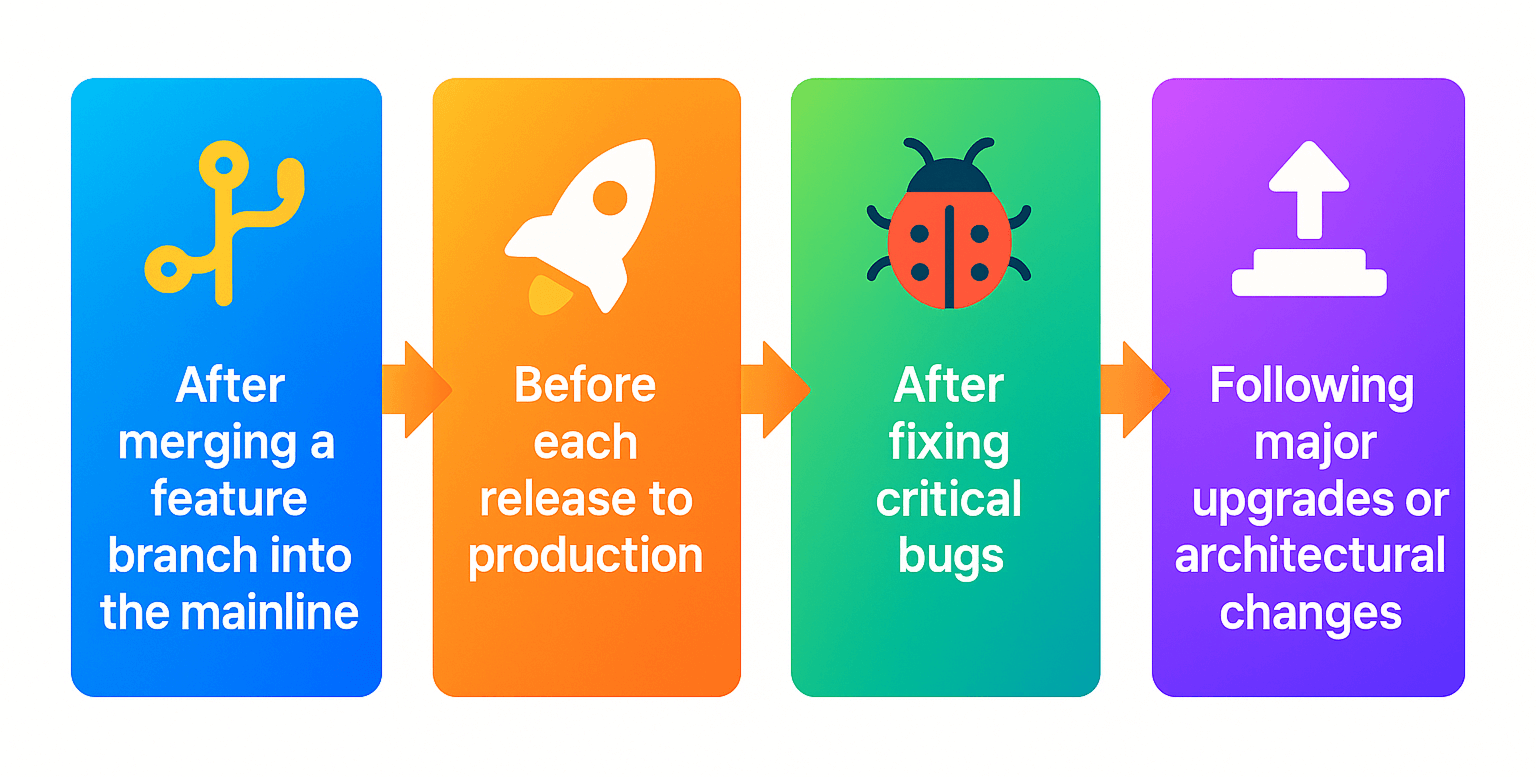Creating Regression Test Suites in Agile Teams
Introduction: Why Regression Testing Matters in Agile
Agile development is fast, iterative, and continuous which makes regression testing a cornerstone of quality assurance. Every new sprint introduces code changes, and without proper regression testing, bugs from previous releases can resurface without warning.
That’s why building and maintaining a regression test suite is essential. It helps Agile teams deliver updates quickly while protecting against unintended side effects in existing features.

Get the Mobile Testing Playbook Used by 800+ QA Teams
Discover 50+ battle-tested strategies to catch critical bugs before production and ship 5-star apps faster.
What Is a Regression Test Suite?
A regression test suite is a curated set of test cases designed to validate that existing functionality remains intact after code changes, updates, or enhancements. It’s run regularly ideally after every sprint or code merge to catch regressions early and ensure application stability.
In Agile environments, these suites evolve sprint by sprint. As new features are added and older ones are updated or deprecated, the regression suite must be updated in parallel.
Why Agile Teams Need Regression Testing?
Agile emphasizes speed and incremental delivery, but that doesn’t mean quality can take a back seat. Every change, even small ones, can impact other parts of the application.
Regression testing in Agile helps by:
Ensuring consistent functionality after each sprint
Detecting bugs early before they reach production
Enabling continuous integration (CI) and continuous deployment (CD)
Maintaining test coverage over time
Supporting rapid feedback loops across development and QA
Key Strategies for Creating a Regression Test Suite
1. Start Early, Update Continuously
Begin building your regression suite in the early stages of development. Add stable, repeatable test cases as features are delivered, and review the suite at the end of each sprint to:
Add new test cases
Remove outdated or irrelevant ones
Refactor tests for better clarity and speed
2. Use Risk-Based Prioritization
Focus on high-impact areas like core user flows, frequently used features, and historically unstable modules. Prioritize test cases that target:
Business-critical functionality
Recently modified code paths
User-facing components
3. Leverage Test Automation
Manual regression testing quickly becomes unsustainable in Agile. Use automation tools to:
Schedule automated test runs after every commit or merge
Run tests in parallel across platforms/devices
Track performance, flakiness, and reliability
Tools like Selenium, Cypress, TestNG, and Playwright are commonly used for this purpose. For mobile apps, consider platforms like Appium or cloud-based device testing solutions.
4. Use Sanity and Smoke Testing First
Before running the full suite, run sanity and smoke tests to quickly assess the app’s basic functionality. This ensures you’re not wasting time on full regression when the app is already failing at startup or login.
Best Practices for Regression Testing in Agile
Effective regression testing in Agile isn’t just about running old test cases, it's about adapting your strategy sprint by sprint. Here’s how high-performing teams stay ahead:
1. Involve QA Early in the Sprint
Bringing QA into sprint planning ensures that test coverage evolves alongside new features. Early involvement helps create regression test cases that are proactive, not reactive.
2. Integrate with CI/CD Pipelines
For faster feedback, make regression testing part of your continuous integration and delivery pipeline. Automating execution after each merge helps catch issues early without manual intervention.
3. Write Modular, Maintainable Tests
Break tests into smaller, reusable components. This modular approach makes it easier to update or replace test cases as the product evolves, especially helpful when requirements change quickly.
4. Leverage Defect History
Track past bugs and failure patterns to identify high-risk areas. Prioritize test coverage for modules or features that have historically been unstable.
5. Monitor and Tackle Flaky Tests
Flaky tests can undermine team confidence in automation. Regularly review test runs to spot instability, isolate root causes, and improve reliability.
6. Continuously Review and Refine Test Suites
Your regression suite shouldn’t grow unchecked. Remove obsolete cases, update outdated ones, and regularly audit the suite for relevance and efficiency. This reduces test noise and improves signal quality.
Common Challenges in Agile Regression Testing
1. Test Suite Expansion
As Agile teams release new features sprint after sprint, the regression test suite naturally grows in size. Without intentional structure or automation, the suite becomes too large to execute efficiently, often leading to longer feedback cycles and reduced test coverage. Over time, teams face the risk of spending more time managing the suite than actually delivering quality.
2. Communication Breakdowns
Agile thrives on collaboration, but it’s easy for communication gaps to form between developers, QA engineers, and product owners especially when working across distributed teams. If changes aren’t properly documented or discussed, testers might overlook how new code impacts existing features, resulting in missed regressions or duplicated effort.
3. Test Case Maintenance Overload
In fast-moving Agile projects, features evolve quickly and so must the test cases. Without regular maintenance, regression suites can become bloated with outdated, redundant, or irrelevant tests. This not only wastes execution time but also clutters results with false positives. Keeping the suite lean and relevant requires consistent review and cleanup.
When to Run Regression Tests in Agile
Timing is everything. Here are some common triggers:
After merging a feature branch into the mainline
Before each release to production
After fixing critical bugs
Following major upgrades or architectural changes
Run smaller, targeted regression tests continuously and full-suite tests at key milestones.

Regression Test Suite Design: What to Include
Your suite should cover:
UI workflows (login, checkout, profile updates)
APIs and data integrations
Error-prone modules
Legacy features
Authentication and security flows
Cross-browser or cross-platform compatibility checks
Don’t forget to track test coverage and performance over time using analytics from your testing tools.
Conclusion: Smarter Regression Testing = Faster Agile Delivery
Building a well-structured regression test suite isn’t just about adding more test cases; it’s about selecting the right ones, automating strategically, and adapting constantly to Agile needs.
The result? Fewer post-release bugs, faster releases, and better user experiences. By designing your regression test strategy around real risks and sprint cycles, you ensure that quality scales alongside speed.
Whether you're testing on the web, mobile, or API layers, regression testing remains the glue that holds Agile development together.





